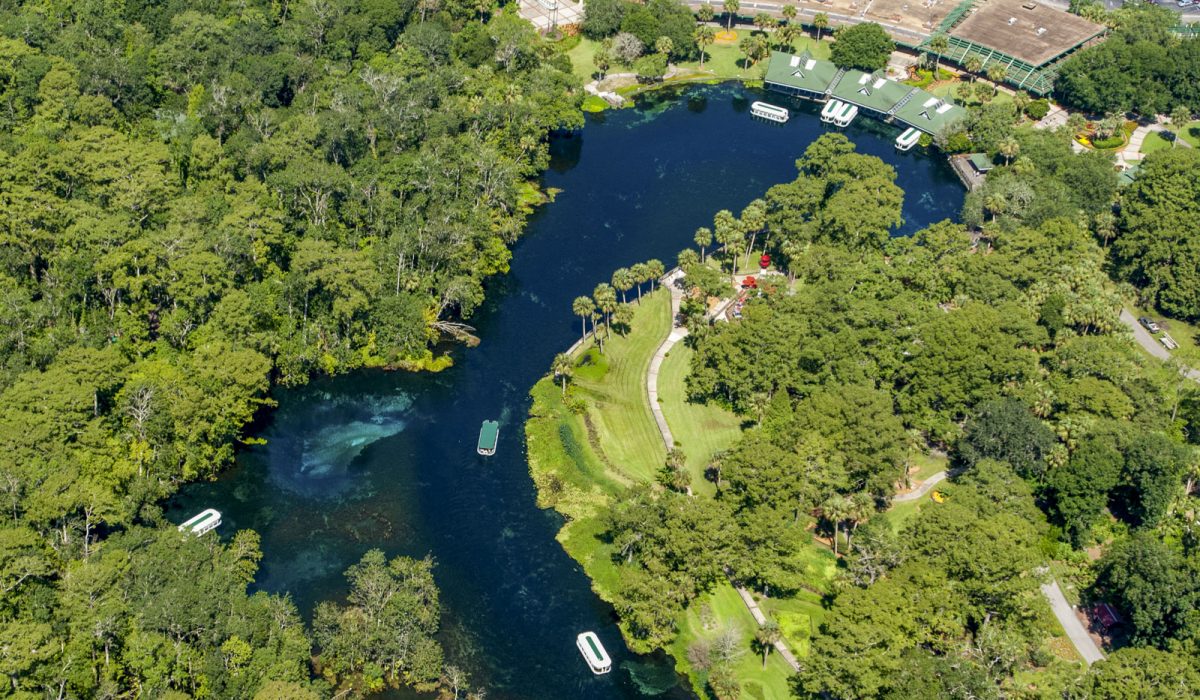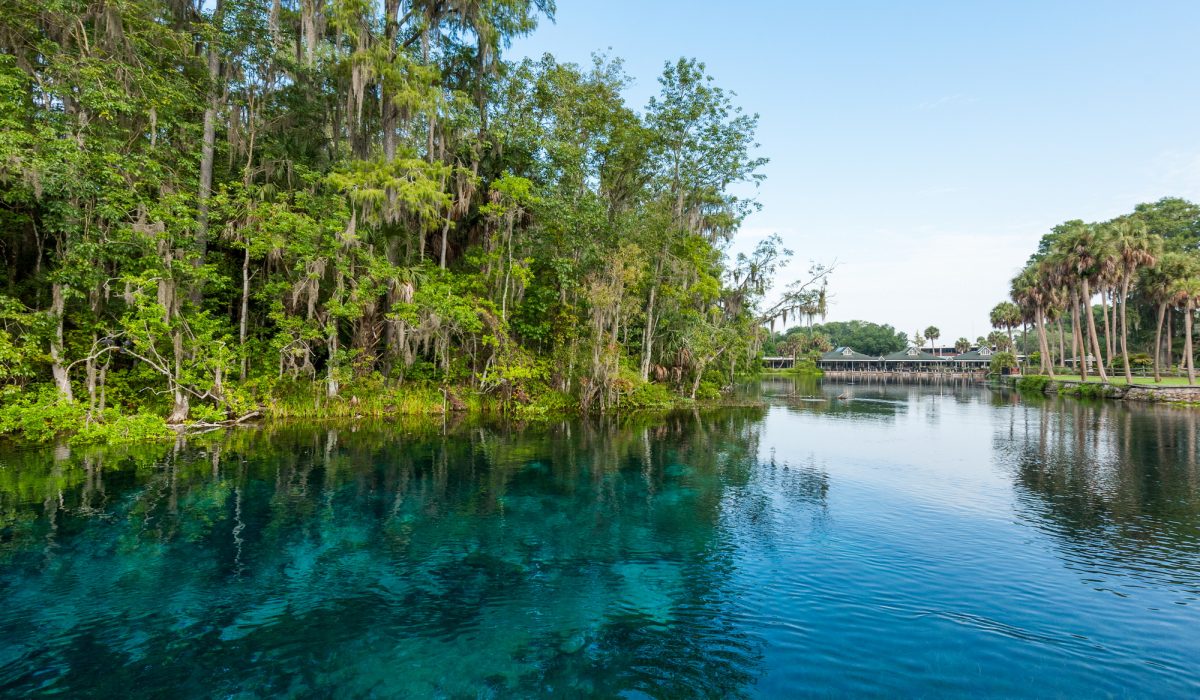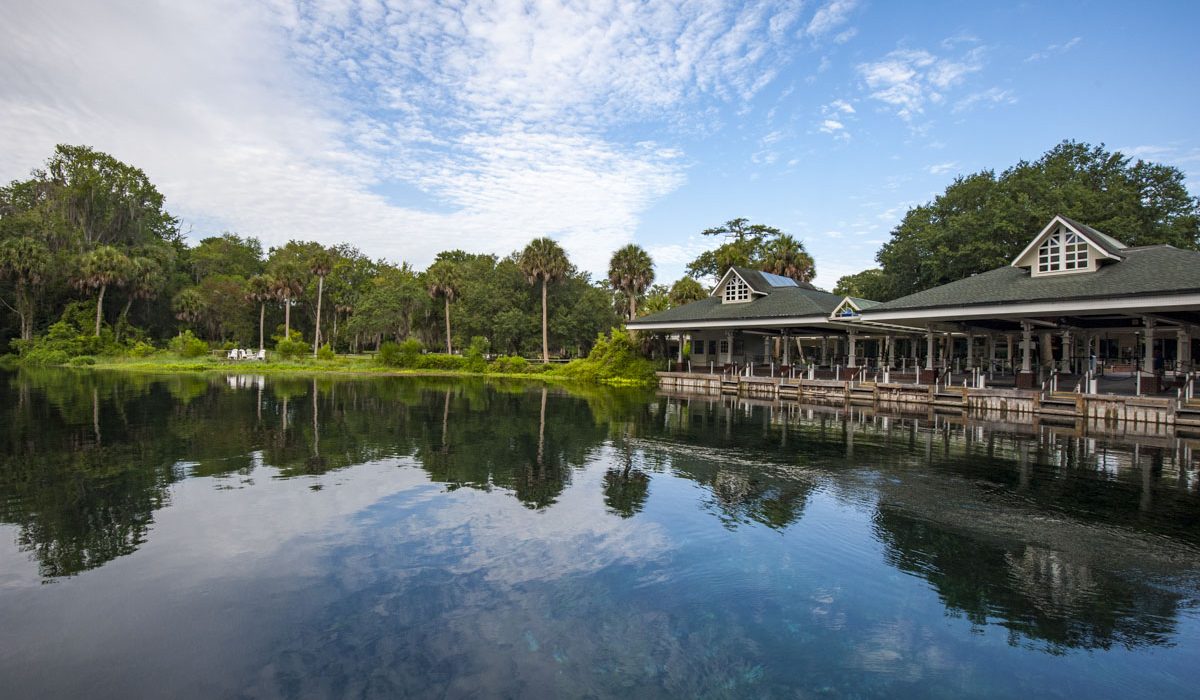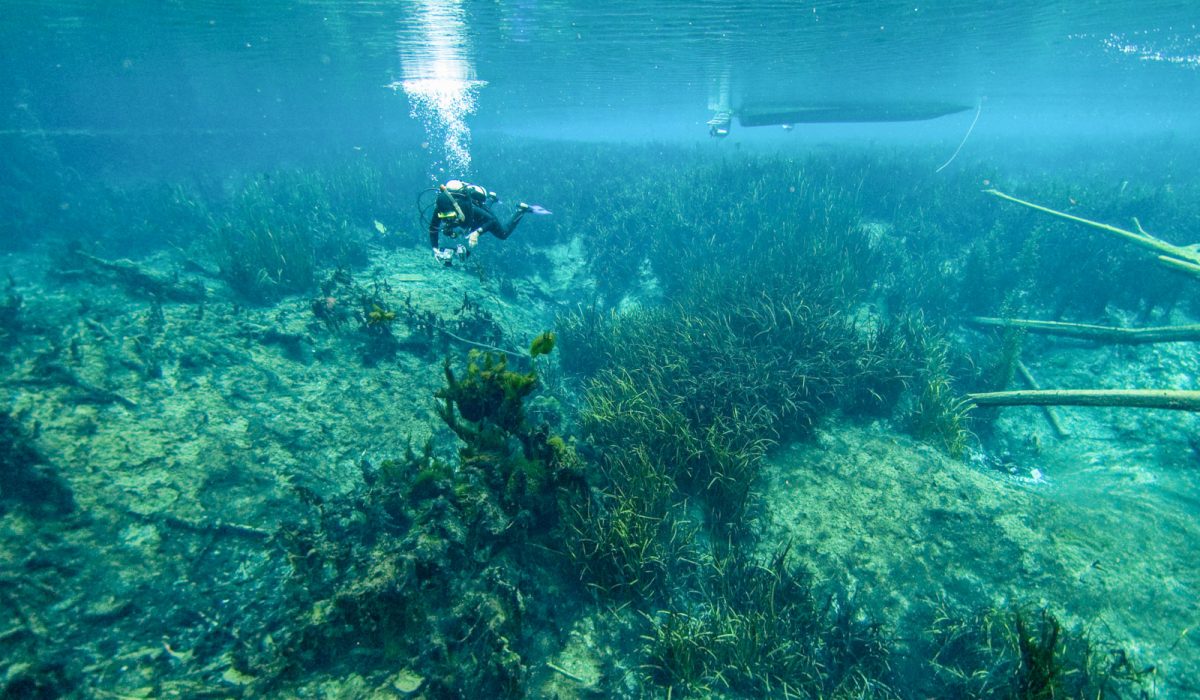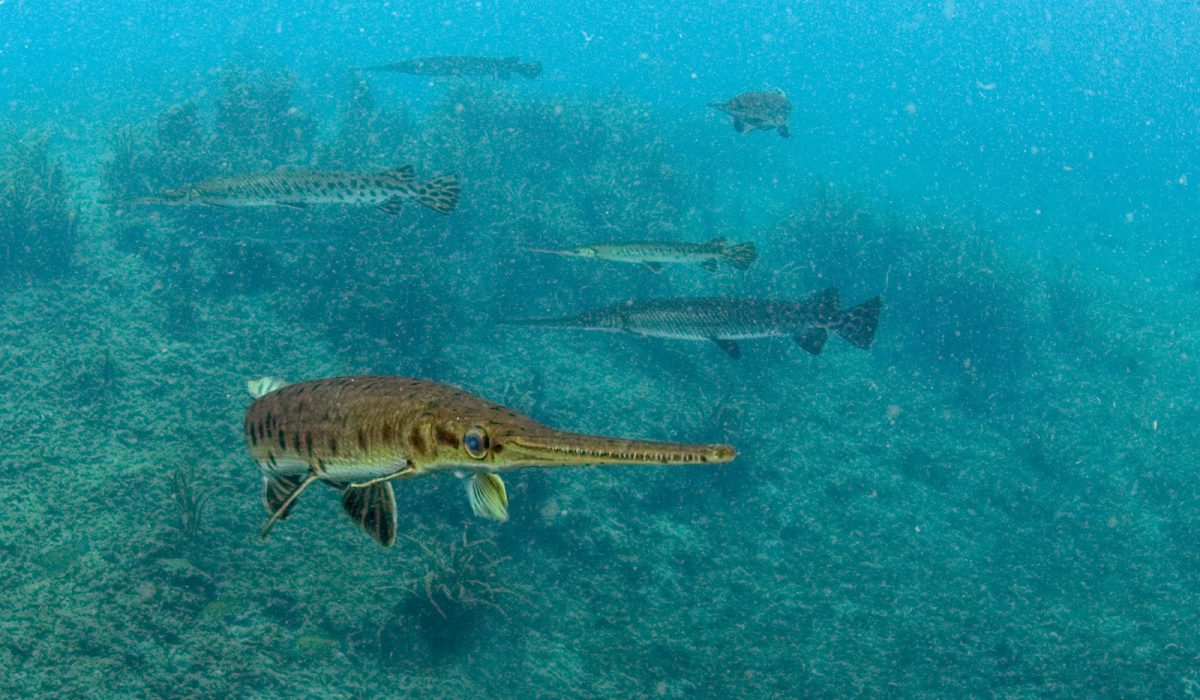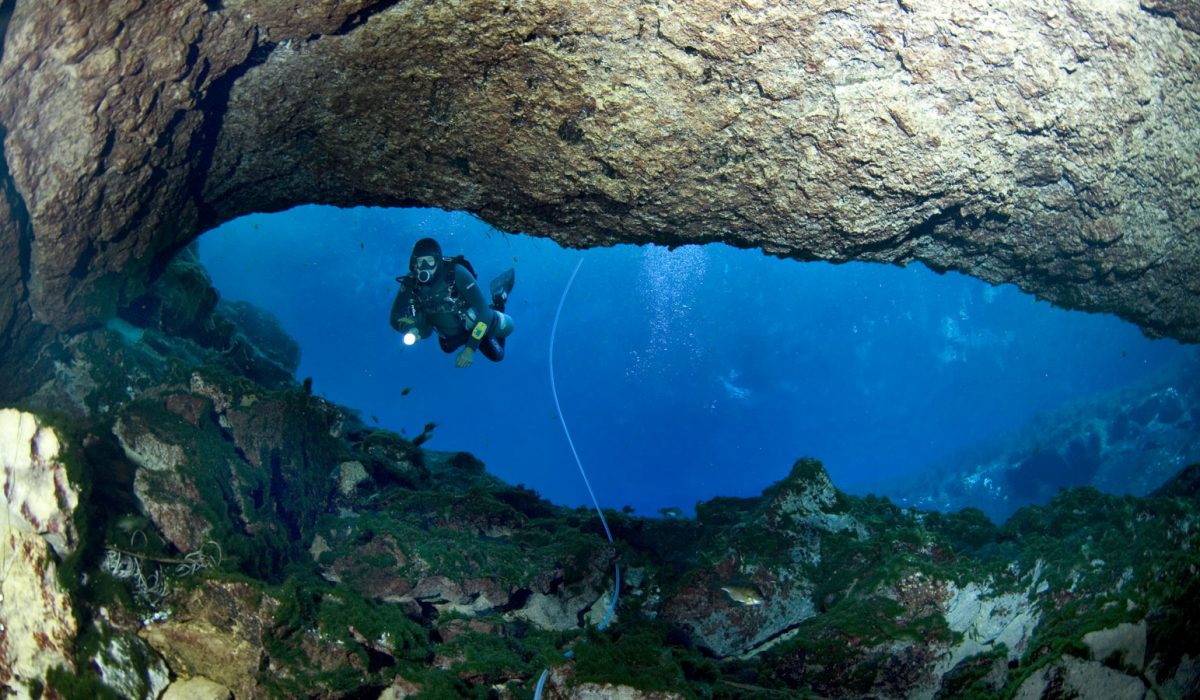Description
One of the state’s most iconic Outstanding Florida Springs, Silver Springs is a first-magnitude spring that forms the headwaters of the Silver River. Silver Springs is actually a group of large vents and smaller springs in the bed or in coves at the edges of the Silver River.
There are 30 springs in the Silver Springs group. The largest of the spring vents is Mammoth Spring (also called the Main Spring), which has two vents in the main pool. The largest of the two vents is located approximately 100 feet east of the glass-bottom boat loading area. The vent is a horizontal, oval-shaped opening about 5 feet high and 135 feet wide beneath a limestone ledge. The depth of water measured over the vent opening is about 30 feet.
The second vent is in the northwestern part of the main pool near the boat loading area. The spring pool measures about 300 feet north to south and 200 feet east to west. The water is clear and light blue, with aquatic vegetation and algae across the sandy spring bottom and limestone substrate.
The flow of Silver Springs is supplied through a vast system of fractures and solution channels in the limestone and dolomite of the Floridan aquifer. An underwater cave system has been mapped at Mammoth Spring. Approximately 45 percent of the Silver Springs flow is from Mammoth Spring, with added flow from smaller springs and boils downstream of the main pool. The Silver River flows eastward through a dense cypress swamp for about 5 miles to the Ocklawaha River.
The numerous smaller springs in or at the edges of the Silver River are within 0.6 mile of Mammoth Spring. Vent openings in the limestone are clearly visible in the river bottom at most of these springs. Clear, bluish water is characteristic of the Silver River and its contributing springs, with aquatic vegetation and algae common. These springs are described below as they occur west to east, or downstream from Mammoth Spring. Most of the spring names are adopted from Odom (1957). Oscar Spring, Mastodon Bone Spring, Alligator Hole Spring, Garden of Eden Spring, No Name Cove Spring, Turtle Meadows Spring, Turtle Nook Spring, Raccoon Island Spring, and Timber Spring were named by St. Johns River Water Management District and Florida Geological Survey.
Recreational activities and public access
The Silver River and its famous springs are located in the Silver Springs State Park. The park is possibly most famous for its glass-bottom boat rides from which the numerous springs and the associated aquatic life may be viewed. However, the park also offers camping, canoeing and kayaking, birding, historic gardens, geocaching, hiking trails, equestrian trails, mountain bike trails and wilding viewing opportunities.
State park fees apply for day-use and camping, and glass-bottom boat tours and other concessions also have related fees. See the park web page for more information.
Directions
There are three entrances to Silver Springs State Park. The main entrance is located on SR 40 at 5656 East Silver Springs Boulevard, Silver Springs, FL 34488. The camping and Silver River Museum entrance is located on SR 35 at 1425 N.E. 58th Ave., Ocala, FL 34470. The equestrian entrance is located approximately 1.3 miles east of the Main Entrance on SR 40.


